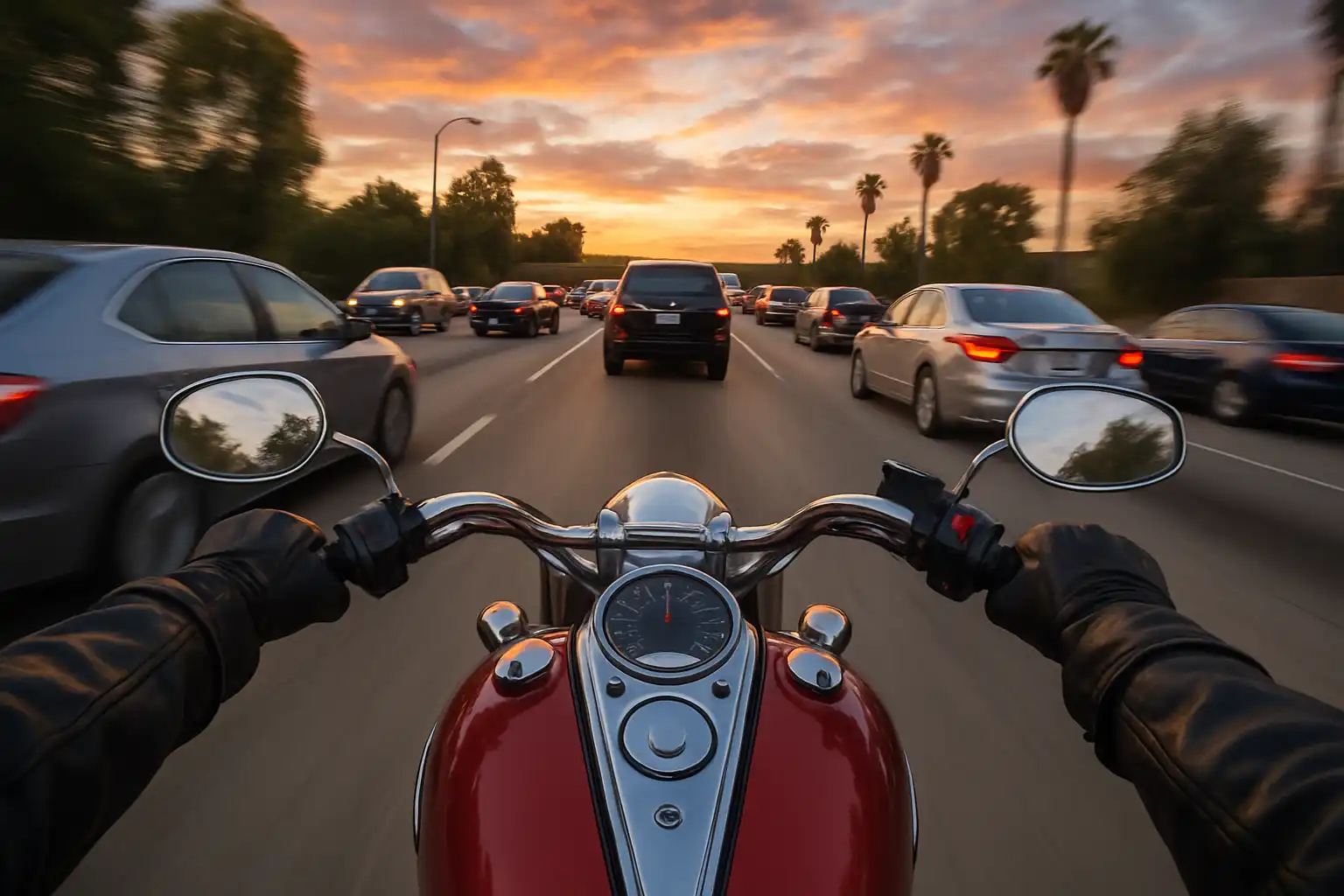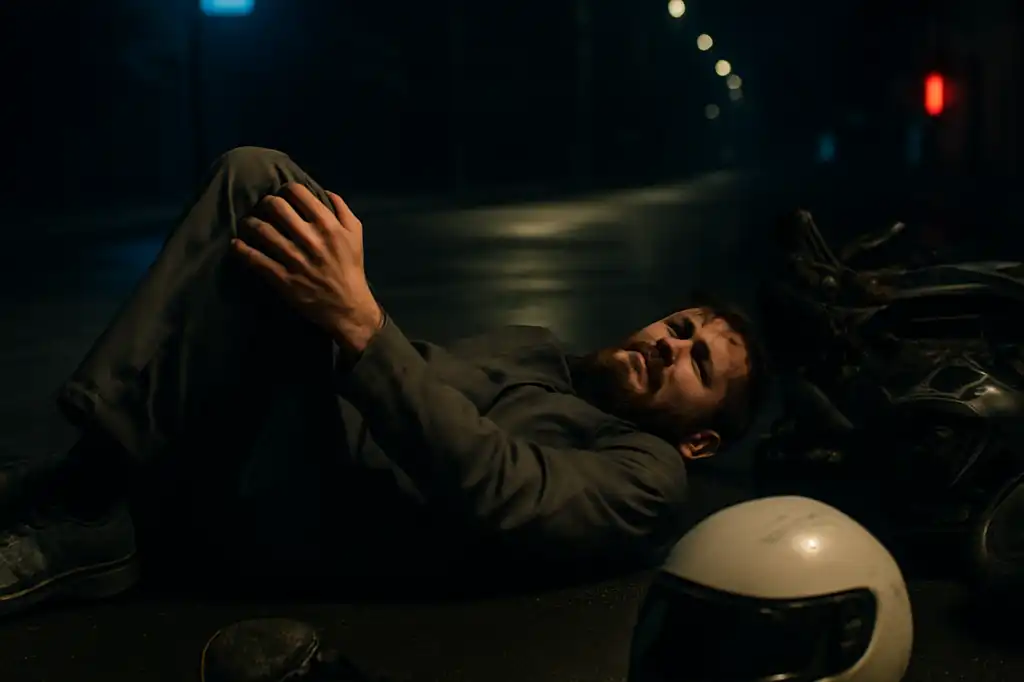California remains the only state in the U.S. where lane splitting is explicitly legal. Riders use this maneuver to save time in heavy traffic, especially on Los Angeles freeways. While lane splitting is recognized under California law, it also creates unique risks and legal questions. In 2025, understanding lane splitting accidents California 2025 is critical for riders who want to protect their safety and their legal rights after a crash.
What Is Lane Splitting?
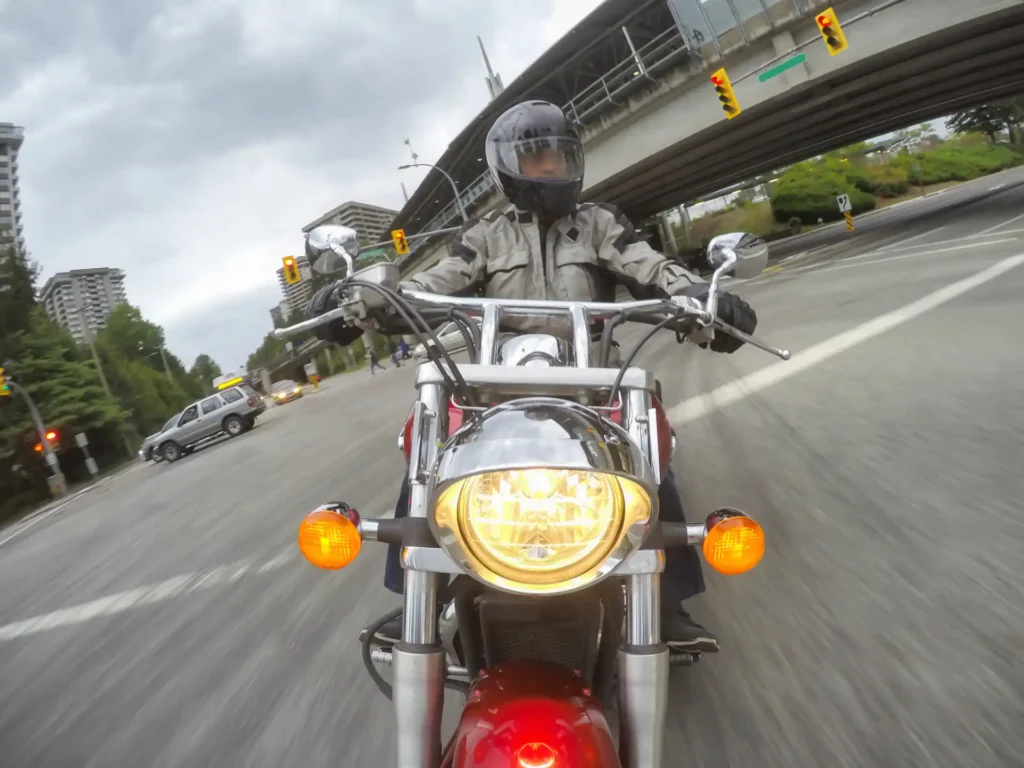
Lane splitting, also called “white lining” or “filtering,” refers to a motorcycle moving between lanes of slow or stopped traffic. Supporters argue that it reduces congestion and lowers the risk of rear-end collisions for motorcyclists. Critics, however, say it creates dangerous situations when drivers fail to anticipate riders.
California’s Lane Splitting Laws in 2025
California law allows lane splitting, but the California Highway Patrol (CHP) has issued guidelines to promote safety. In 2025, the CHP recommends:
- Lane splitting at speeds no more than 15 mph faster than surrounding traffic.
- Avoiding lane splitting when traffic exceeds 40 mph.
- Splitting between the far-left lanes, where drivers expect motorcycles more often.
- Never lane splitting between large trucks or buses, which have limited visibility.
These are not strict laws, but following them reduces risk and strengthens a rider’s case if an accident occurs.
Why Lane Splitting Accidents Happen
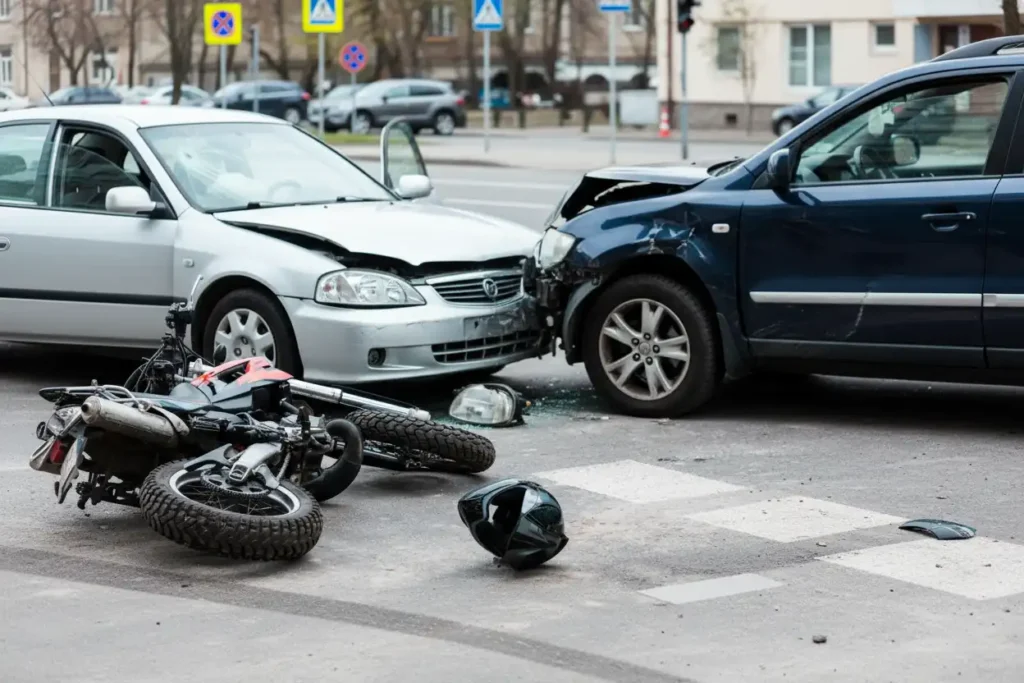
Lane splitting accidents often result from driver negligence. Common causes include:
- Unsafe lane changes: Drivers shift lanes without checking mirrors or blind spots.
- Distracted driving: Phone use prevents drivers from noticing lane-splitting riders.
- Sudden opening of car doors: In heavy traffic, drivers may open doors without checking.
- Aggressive driving: Some motorists deliberately block or “swerve” to prevent lane splitting.
In Los Angeles, where traffic jams are constant, these risks are magnified daily.
Liability in Lane Splitting Accidents
Determining fault in lane splitting accidents is complex. While lane splitting is legal, courts still examine whether the rider was splitting safely and within CHP guidelines. Liability may be shared under California’s comparative negligence system:
- If a driver makes an unsafe lane change, they may hold the majority of fault.
- If a rider was splitting at high speeds, some fault may be assigned to them.
- If both acted negligently, fault percentages are divided accordingly.
This makes strong evidence critical to proving that the driver, not the rider, caused the collision.
Evidence That Helps Riders
Attorneys build lane splitting accident cases using:
- Helmet camera footage: Video can prove the rider was splitting safely.
- Police reports: CHP reports often document driver behavior at the scene.
- Witness statements: Testimony from other motorists supports the rider’s account.
- Vehicle damage analysis: Impact points on vehicles can show who was at fault.
In 2025, digital data such as dashcam recordings and GPS logs are also increasingly used in court.
Compensation Available After Lane Splitting Accidents
Victims of lane splitting crashes may pursue compensation for:
- Medical expenses, including emergency care and long-term treatment
- Lost wages and reduced earning potential
- Pain and suffering damages
- Property damage to motorcycles and gear
- Wrongful death damages for families of riders killed in crashes
The amount depends on the severity of injuries, fault percentages, and insurance coverage.
Insurance Challenges for Lane Splitting Accidents
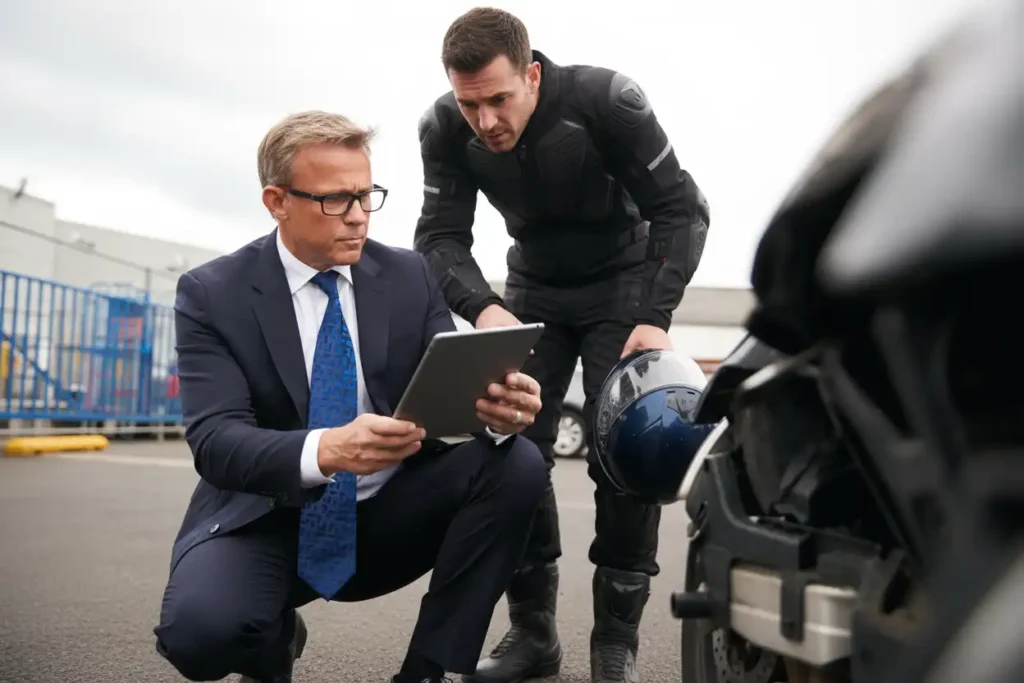
Insurance companies often argue that lane splitting is inherently dangerous, even though it is legal in California. They may try to reduce or deny claims by blaming the rider. Working with an attorney ensures insurers apply the law correctly and consider CHP safety guidelines when assessing fault.
Legal Strategies for Lane Splitting Cases
Attorneys use several strategies to strengthen lane splitting accident claims:
- Showing the rider complied with CHP guidelines at the time of the crash.
- Proving the driver’s negligence, such as texting or unsafe lane changes.
- Using expert accident reconstruction to illustrate how the crash occurred.
- Highlighting the benefits of lane splitting, such as reduced rear-end crash risks, to counter negative biases.
Safety Tips for Lane Splitting in 2025
While no maneuver is risk-free, riders can reduce accidents by:
- Following CHP’s speed and lane guidelines.
- Wearing bright or reflective gear to increase visibility.
- Using helmet cameras to document rides.
- Avoiding aggressive lane splitting in heavy or unpredictable traffic.
These steps improve safety and protect a rider’s legal position if an accident occurs.
Conclusion
Lane splitting accidents California 2025 remain a pressing issue in traffic-heavy cities like Los Angeles. Although lane splitting is legal, drivers often fail to anticipate motorcycles, leading to preventable crashes. Victims have the right to pursue compensation, but proving fault requires strong evidence and skilled legal representation. With the right attorney, riders can overcome insurance disputes, reduce fault percentages, and secure fair settlements after a lane splitting accident.
If you’ve been injured while lane splitting, contact an experienced California motorcycle accident attorney. The right legal strategy can protect your rights and help you recover the compensation you deserve in 2025.

